Instrumentation

The first challenge in the realisation of the Urban Seismic Observatory of Catania was the design and development of a low-cost seismic-accelerometer station suitable for the project purposes, together with the choice of sensors to be coupled.
Beginning in the second half of 2020, the first prototypes of the OSU-AQ2 multi-parameter station were built, replacing the previous version OSU-AQ1. After the appropriate functional checks in the lab and the first field tests of OSU-AQ2, the replacement of the first prototypes has begun in 2021. The installations proceeded in 2022, and the Urban Seismic Observatory of Catania now has 23 stations (30 by the end of the year).

Functional block diagram of the OSU-AQ2 data collector and photos showing the individual parts
DATALOGGER
Development of the OSU station
In 2018, a first prototype of an accelerometer station based on MEMS (Micro ElectroMechanical Systems) technology was built in the frame of the agreement with the Municipality of Catania, consisting of:
- a Raspberry Pi 3 model B SBC;
- a MEMS PhidgetSpatial precision 1043 0/0/3, Acceleration Max ± 2g, ADC Resolution - 16-bit, Acceleration Measurement Resolution equal to 76.3 μg, a PhidgetGPS 1040 for timing;
- 2200 mAh mini-UPS (4/5 hours autonomy in case of power failure).
OSU-AQ1 station (2019)
Having confirmed the poor performance of the aforementioned prototype and of the Phidget MEMS, in 2019 we proceeded, thanks to the eWAS project, with the design and implementation of a new prototype of multi-parameter device (named OSU-AQ1) and to verify the performance of other MEMS accelerometers with lower noise. A 16-channel 24-bit delta-sigma ADC has been integrated into the new station to connect analogue sensors, and the Raspberry Pi 3 model B SBC has been replaced by a Raspberry Pi 3 model B+. This new station was initially equipped with an analogue MEMS accelerometer sensor by TE Connectivity (MEAS 4630A), with better resolution than the Phidget 1043. At the same time, other MEMS accelerometers with lower cost, lower noise and higher sensitivity than the Phidget were evaluated, and the choice fell on an analogue MEMS accelerometer from Analog Device, the ADXL354, and then the ADXL355 digital accelerometer.
The OSU-AQ1 Smart Acquisition Unit consists of a 16-channel delta-sigma ADC with 24-bit sampling, 23.7k samples per second (SPS) per channel and dynamics > 130 dB and a Single Board Computer (SBC). The unit is able to operate as a vibrational/seismic/microseismic device and allows other types of sensors to be connected in addition to a velocimeter and an accelerometer, such as inclinometers, crack monitors, temperature sensors, wire displacement meters, load cells, pressure level transducers, etc.
In addition to transmitting the acquired data, the unit can also record in a special buffer on non-volatile memory in an internal 32 GB Compact Flash.
The unit is also equipped with a GPS (Global Positioning System) for synchronizing signals to UTC (Coordinated Universal Time) and a mini UPS (Uninterruptible Power Supply) that ensures 2-3 hours of autonomy from the mains power supply.
The presence of an SBC enables implementing algorithms for real-time on-site pre-processing of the acquired signals, for the creation of extremely high-performance observation systems. This has allowed an on-site Earthquake Early Warning algorithm to be implemented on the station. The format of the seismic data (velocimeter and accelerometer) is miniSEED, a widely used format in seismology.
Summary of OSU-AQ1 features:
• 24bit ADC board allows connecting different types of analogue sensors;
• Single Board Computer (SBC) with 1.4 GHz 64-bit quad-core processor, 1 GB RAM,
• Gigabit Ethernet, Wi-Fi dual-band (2.4GHz e 5.GHz) IEEE 802.11.b/g/n/ac;
• NEO-7M GPS module;
• Connectivity: 300 Mbit/sec LAN, Wireless and 3G/4G for data streaming;
• 32GB MicroSD for data storage;
• 5V/2.5 A power supply;
• Consumption 5-6 Watts.
OSU-AQ2 station (2020-2021)
In early 2020, the re-engineering of the OSU-AQ1 master station prototype was started, to optimize the integration of components (e.g. amplifiers, modems, etc.) that were added over time to improve its performance. Throughout 2020, some OSU-AQ2 acquirers remained in the validation engineering phase to verify the proper functioning of all parts. During 2021, installations began to replace OSU-AQ1.
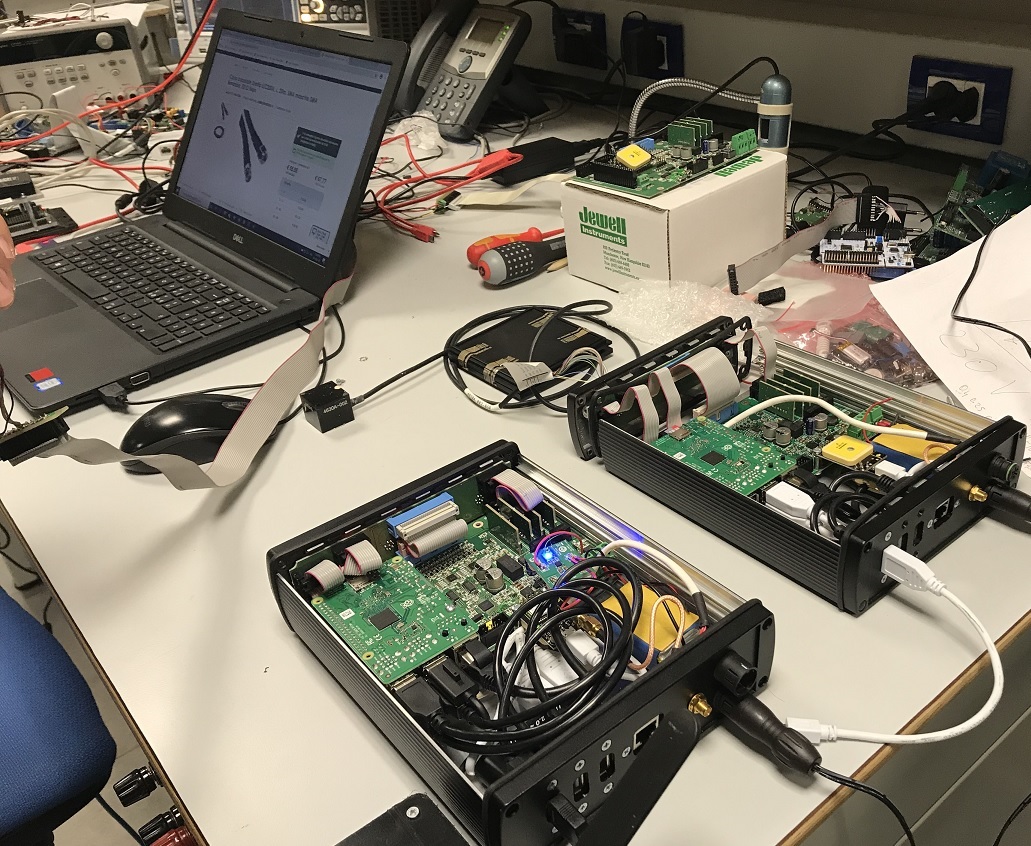
OSU-AQ2 data logger
An on-site Earthquake Early Warning code, named OSUSAVE, based on the one developed by Caruso et al., 2017 and sold by RISS srl, has been implemented in the OSU-AQ2 master station, adapting it to the needs of the Urban Seismic Observatory of Catania. Between the end of 2020 and the beginning of 2021, the functional verification of the EEW system was started at two stations of the OSUCT network and precisely at the OSU01 and OSU02 stations, both equipped with the ETL3D/5s_H1.
SENSORS
Almost all stations of the OSU-CT network are equipped with an ADXL355 accelerometric MEMS triaxial sensor (noise density of 25 g/Hz). Some of them are also equipped with a wide band velocimeter (5s) named ETL3D / 5s (Fertitta et al., 2019), which we further developed to include an accelerometric sensor.
Coupling the velocimeter with the MEMS accelerometer makes it possible to detect both lower-magnitude earthquakes and to compensate for the higher noise level of MEMS at the lowest frequencies in the range of seismological interest (0.1-20Hz), and at the same time to record strong-motion data for stronger earthquakes that often cause saturation of the velocimeter data.
The graph below compares the noise levels of the various accelerometric sensors that have been tested.
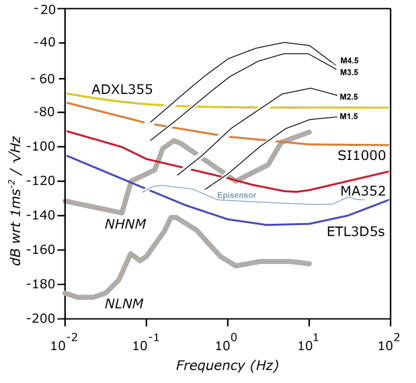
Comparison of spectral densities (PSD) of noise for the ADXL355, Safran SI1003 and Epson M-A352 MEMS accelerometers. Also shown are the PSD of an Episensor (Class A force-balance accelerometer), the PSD of the ETL3D-5s velocimeter, the Low Noise Model and High Noise Model curves (in grey) from Peterson (1993), and response spectra representing earthquakes of different magnitudes at 10 km intervals.
HYBRID SEISMOMETER ETL3D/5S_H
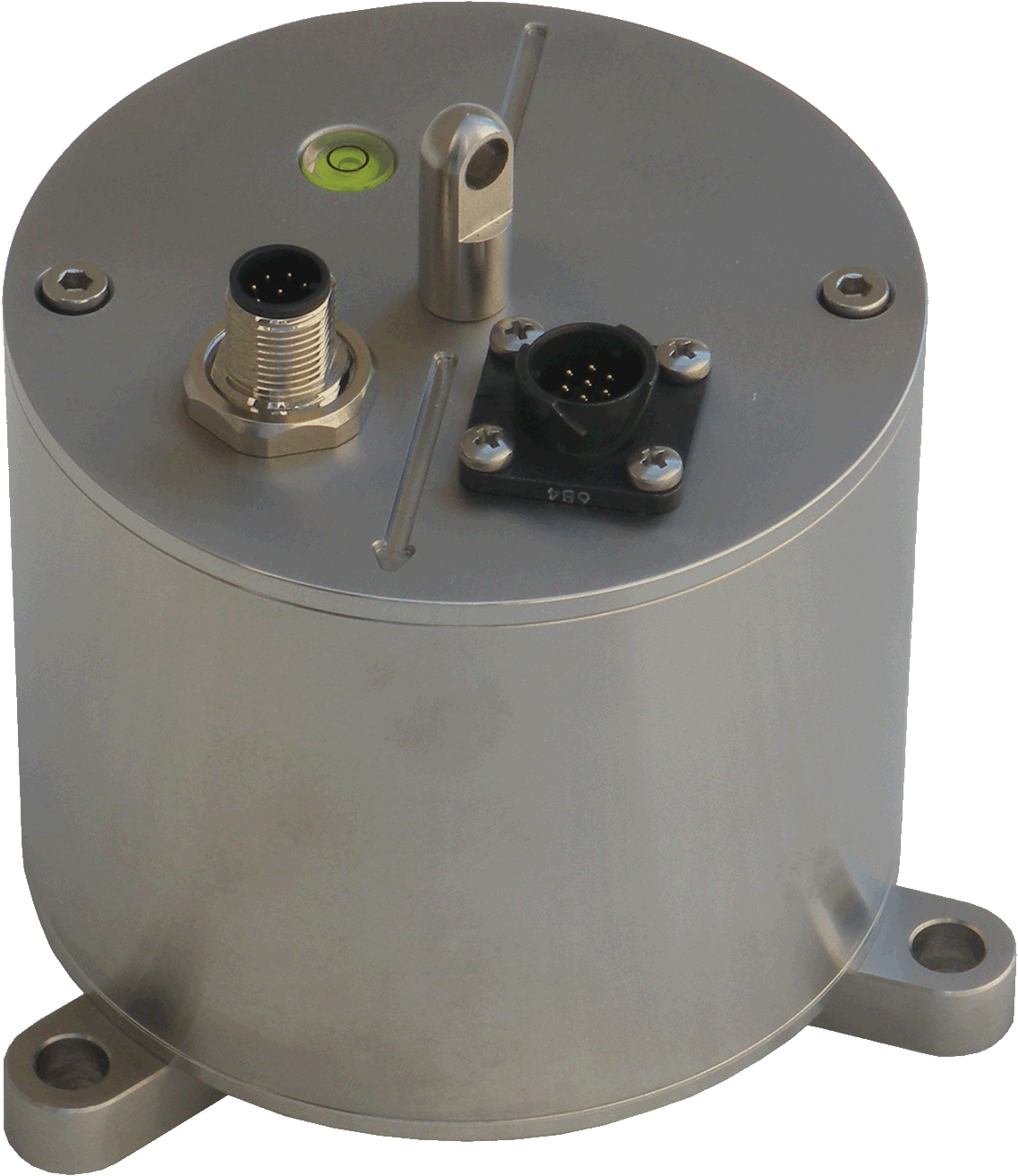
The ETL3D/5s velocimeter is designed for both environmental vibrations and local earthquake monitoring, so that it can be used for both geological-seismological and engineering purposes (Fertitta et al., 2019). It is a three-component wide-band (5s) velocimeter of small size with the following characteristics: Sensitivity: 360 V/(s/m) +/- 5% precision, Bandwidth: -3dB points at 5s and 100 Hz, Clip level: 12.5 mm/s.
In the second half of 2019, a hybrid version of the ETL3D/5s, named ETL3D/5s-H1, was realized, which internally integrates an ADXL355 MEMS accelerometer. This seismometer, preliminarily verified at the LEDA laboratory of the University of Enna KORE, was subsequently calibrated, in October 2019, at SPEKTRA in Dresden (Ge) by means of two shakers, the APS129 and the SE13, with a primary calibration system (Doppler effect laser vibrometer). A utility model is being developed for the ETL3D/5s_H hybrid seismometer.

Photo of the ETL3D5s_H with its different versions
In the second half of 2020, a second prototype of the ETL3D/5s_H sensor, named ETL3D/5s_H2, was developed. It houses a three-axis Epson Q-MEMS M-A352 digital accelerometer sensor with higher sensitivity and lower noise than the ADXL355, which has an SPI-type communication interface as for the ETL3D/5s_H1.
MEMS ACCELEROMETER SENSOR
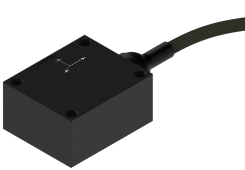
The ANSS working group (Advanced National Seismic System, US Geological Survey, 2008, 41) classifies accelerometers into Class A (useful resolution of approximately 20 to 26 bits with a dynamic range greater than 111 dB), Class B (useful resolution of approximately 16 to 19 bits at ± 2 g), and Class C (useful resolution of approximately 12 to 15 bits at ± 2 g).
The accelerometer sensor chosen for eWAS is the Analog Device ADXL355 digital MEMS accelerometer, which has an internal 20-bit Σ-Δ analogue-to-digital converter (ADC) and a built-in bandpass filter. The ADXL354/ADXL355 belongs to a family of 3-axis MEMS accelerometers with low noise density, low offset drift at 0 g, low power, and selectable measurement ranges. The ADXL354/ADXL355 provide optimum noise values, low thermal offset drift and long-term stability to enable precision applications with minimal calibration and very low power consumption. The low power consumption allows its use in wireless systems for SHM.
Main features of ADXL355: Selectable range: ± 2.048 g, ± 4.096 g or ± 8.192 g Sensitivity = 256000 LSB/g; Scale factor (Resolution) 3.9 μg/LSB Nonlinearity 0.1 % Noise density 25 μg/√Hz; Dynamic Range > 90 dB.
Other MEMS accelerometers are also being tested for the OSU-CT network and SHM purposes, namely the EPSON M-A351 and M-A352 and Safran SI1003.
MULTI-PARAMETER NODE FOR SHM - SWOSU1
For the structural health monitoring (SHM) of buildings, the SWOSU1 multi-parameter node was designed in the second half of 2020. It is equipped with 2 MEMS accelerometers with different sensitivity and low noise, a biaxial inclinometer and environmental sensors for pressure, temperature and humidity. The first prototype was made in 2021 and is currently being tested. Data acquired in trigger, on-demand and/or periodic modes are transmitted to the OSU-AQ2 master station.
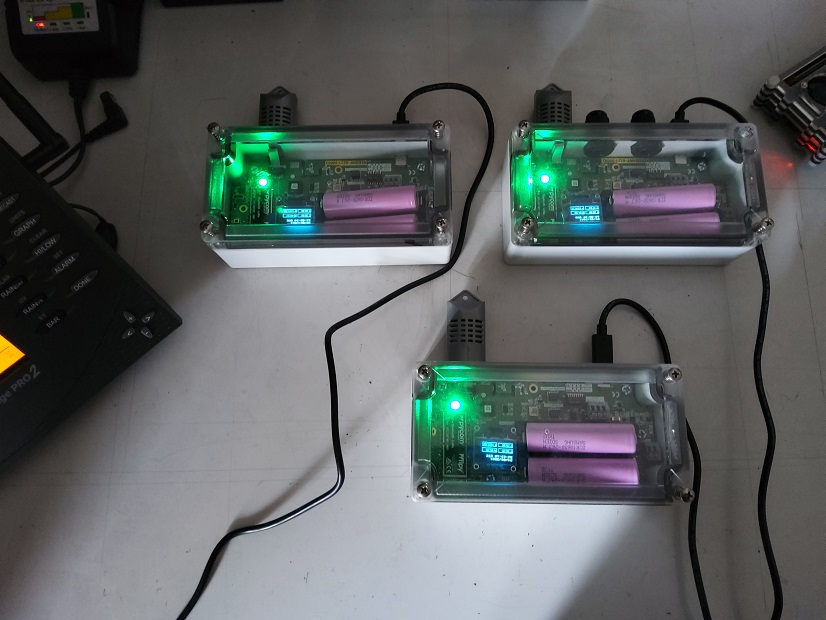
Photos of the first prototype of SWOSU1
OSU-AQ1, OSU-AQ2 and SWOSU1 are the results of the collaboration between INGV and Meridionale Impianti SpA (D. Patanè, W. Yang, A. Colino, A. Astuti contributed to the development/realization)
ETL3D/5s and ETLE3D/5s_H are set up within INGV (G. Fertitta, A. Costanza, G. D'Anna and D. Patanè contributed to the development/realization)
OSUSAVE, the on-site Earthquake Early Warning system, is the result of the collaboration between INGV - TME Srl - RISS Srl (C. Martino, D. Patanè, W. Yang contributed to the development/implementation)


